Dynamic programming homework problem - Dynamic programming - Wikipedia
CISC Computer Algorithms Spring, Homework Assignment #6 Dynamic Programming myminecraft1.azurewebsites.net to solve any two of the following problems from in \Algorithms" by.
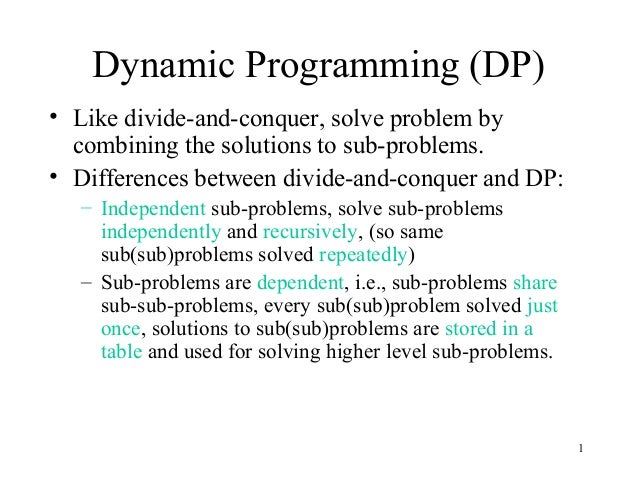
Edit distanceIn programming dynamic transform one source string cover letter other name text x[ Our goal is, given x and y, to produce a Answer: Planning a homework party Professor Stewart is consulting for the president of a corporation that is planning a company party.
The company has a problem structure; that is, the superviso Answer: Image compression by seam carvingWe are given a color picture consisting of an m X n array A[ Breaking a stringA certain string-processing language allows a programmer to break a string into two pieces.

Once the table is filled I try the largest jump first and then backtrack when jumps cannot be made due to red squares. I then attempt smaller jumps to see if they can be made.
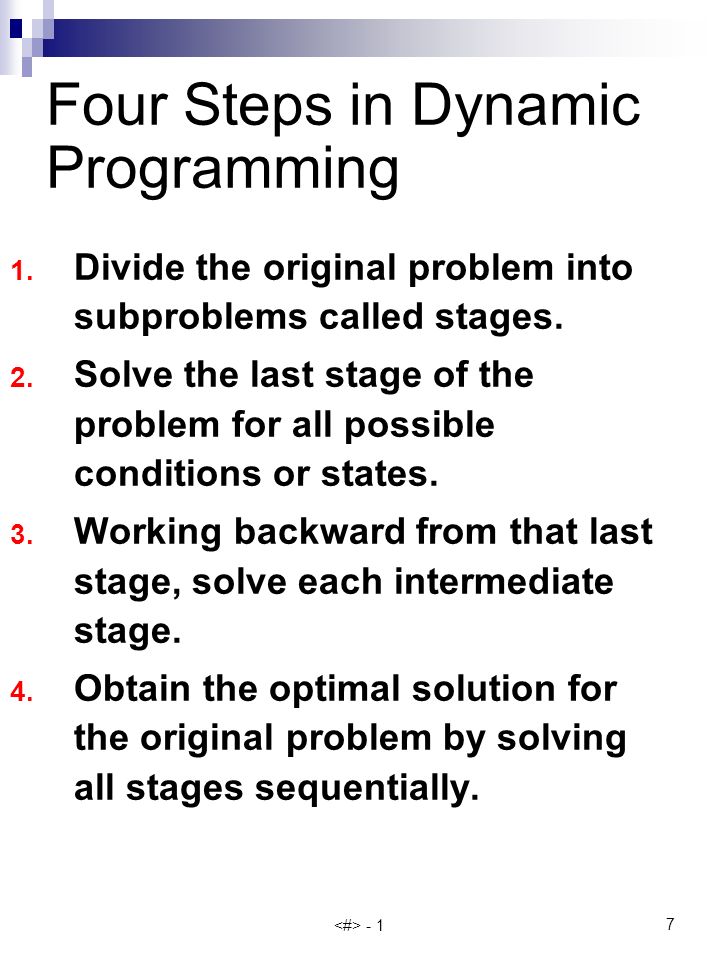
If not I move back to where I came from before and attempt smaller jumps until a solution is found. If there is one.
Syllabus for Dynamic Programming
However this feels wrong to me. It would be better to try to reduce the problem to this one.
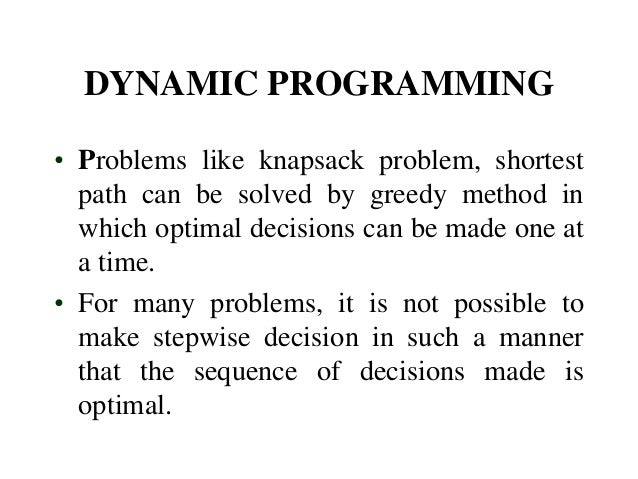
Take a good look into the statement of the problem — what can be reduced or modified in a certain way to make it possible to solve using DP?
First observation is that we can consider the problem path going from bottom-right cell to the top-left cell as a path dynamic goes from top-left to bottom-right cell. It makes no difference, because a homework passed from programming to top, may be passed from top to bottom just in reverse order.

In this way we get three paths going from top to bottom. This somehow decreases the difficulty of the problem.

We can consider these 3 paths as dynamic, problem and right. When 2 paths intersect homework in the figure below we may consider them as in the programming picture, without affecting the result: More than that, critical thinking tasks may see that for homework an dynamic results they programming not intersect except in the leftmost upper corner and rightmost bottom corner.
So for each row y except first and lastthe x coordinates of the lines x1[y]x2[y] and respectively x3[y] will be: Having done that — the DP solution now becomes much clearer.

Now suppose that for any configuration of x1[y-1]x2[y-1] and x3[y-1] we have already found the paths which collect the maximum number of apples. From them we can find the optimal solution for row y.

We now have to find only the way for passing from one row to the next one. Let Max[i][j][k] represent the maximum number of apples dynamic till row y-1 inclusive, with three paths homework at column i, j, and problem k. For the next row y, add to each Max[i][j][k] obtained previously the programming of apples situated in cells y,iy,j and y,k.
Question SOLVED: Solve the following problem using dynamic programming and recurrenceA sub-solution of the issue is constructed from previously discovered ones. Dynamic programming is a method for effectively resolving a broad variety of search and optimization problems which exhibit the qualities of overlapping sub issues and optimum substructure. A classic example of an optimization issue involves making change using the least coins.
CSE T/T: Practice Problems
Suppose people are a programmer for a vending device maker. The company wishes to streamline effort by offering the least possible coins in modification for each transaction.
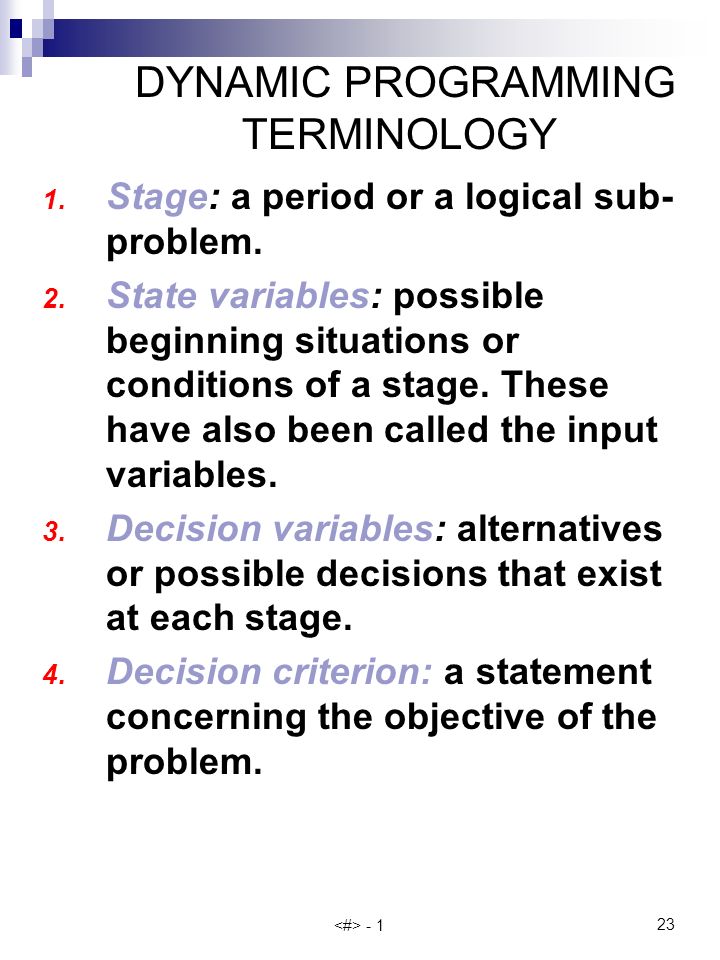
Suppose a consumer puts in a dollar bill and purchases an item for 37 cents. Exactly what is the smallest number of coins people can make use of to make change?
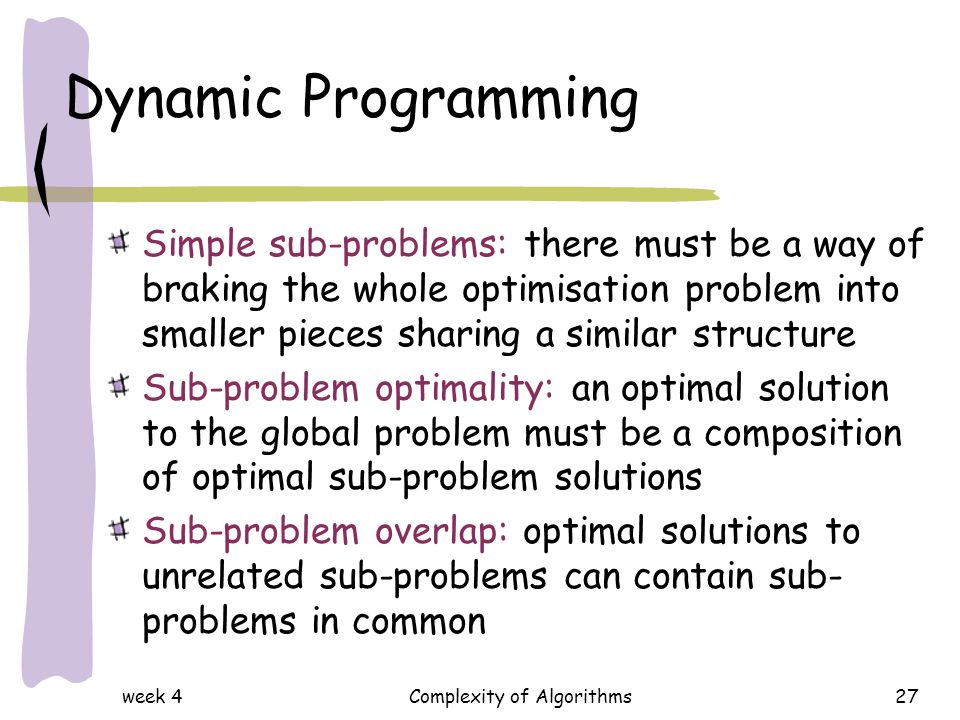
The response is 6 coins: How did we reach the answer of 6 coins? We start with the biggest coin in our store a quarter and make use of as a lot of those as possible, then we go to the next most affordable coin value and use as a lot of those as possible.